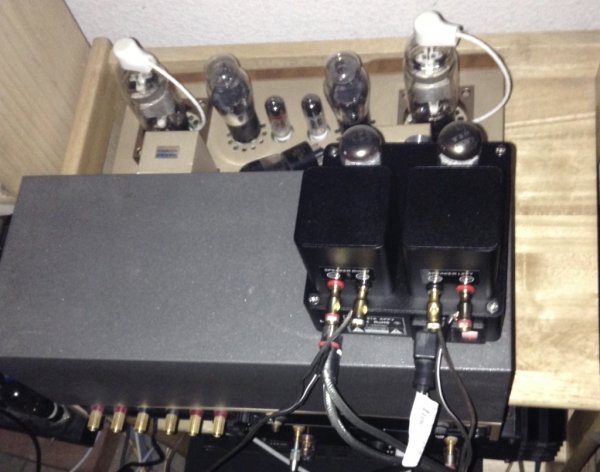Since I have this efficient BG 75 ribbon for the midrange 300Hz - 7Khz crossover points, and I have used flea powered amps to rather wondrous effect (45/2A3/300b), i was wondering what a SEP(single end pentode) would sound like.
Nelson Pass made an offhand comment that his SIT amps (SIT-1 and SIT-2) sounded nearly exactly like an EL34 single ended amp that he had (of course, this is after his SIT amps were already sold out, since you can get an EL34 single ended chassis with tube rectification for a couple hundred dollars on eBay and the SIT amps were 5k for single chassis and 10k for two mono blocks). He also said his SIT amps were the sound “of a single transistor clapping”, since the single SIT device operated for booth voltage and current amplification in a single device to produce about 10 watts per channel single ended.
I didn’t want another large chassis, but this little mini watt amp seems to have been creating a ground swell for it’s great sound at modest cost. 3.5 watts using a tube called a ‘compactron’ which is a pentode driving a tetrode power tube in a single tube (sound of a single tube clapping), which is as simple as things get.
Gemtune APPJ PA1501A mini tube amplifier with 6AD10 tube (black)
Amazon.com: Gemtune APPJ PA1501A mini tube amplifier with 6AD10 tube (black): Electronics
Chinese made for budget market: repulsive, check.
Switching rather than linear power supply: abhorrent blasphemy, check
Tiny Japanese EL84 output transformers: obnoxious, possibly even evil, check
Flea power @ 3.5 watts per channel: laughable, check
Using it on 75 inch BG 75 ribbons for midrange from 300-7000 Hz crossovers: Idiotic, if not insane: check
With various Amazon incentives and credits, the amp was delivered with GE five star Compactron (I love that name) tubes for a grand total of $123 delivered.
How’s it sound? FANTASTIC!
I think Pass was right (at least about the concept of one device clapping).
How’s it sound compared to equally powerful 2A3? If the DHT is the master of musical grammar, then the SEP is the master of musical punctuation. SEP is perhaps slightly on the compressive side, whereas DHT is on the dynamic range expansive side. SEP is more energetic, with great transitions and just the suggestion of crunch, grind and snap (as you would expect from pentode) without losing detail or significant spatiality. Very cool sound, and this thing isn’t even broken in yet. It’s also quiet without any pentode tube rush or hiss that I can detect. It is definitely in the rotation of amps for this midrange ribbon. It has plenty of gain. I don’t even have it turned up all the way, and needs no other gain stage to fit right into the system. Above 95db efficiency likely required for reasonable performance.
View attachment 60143
Here it is sitting on top of the 50 watt Wavac.

















